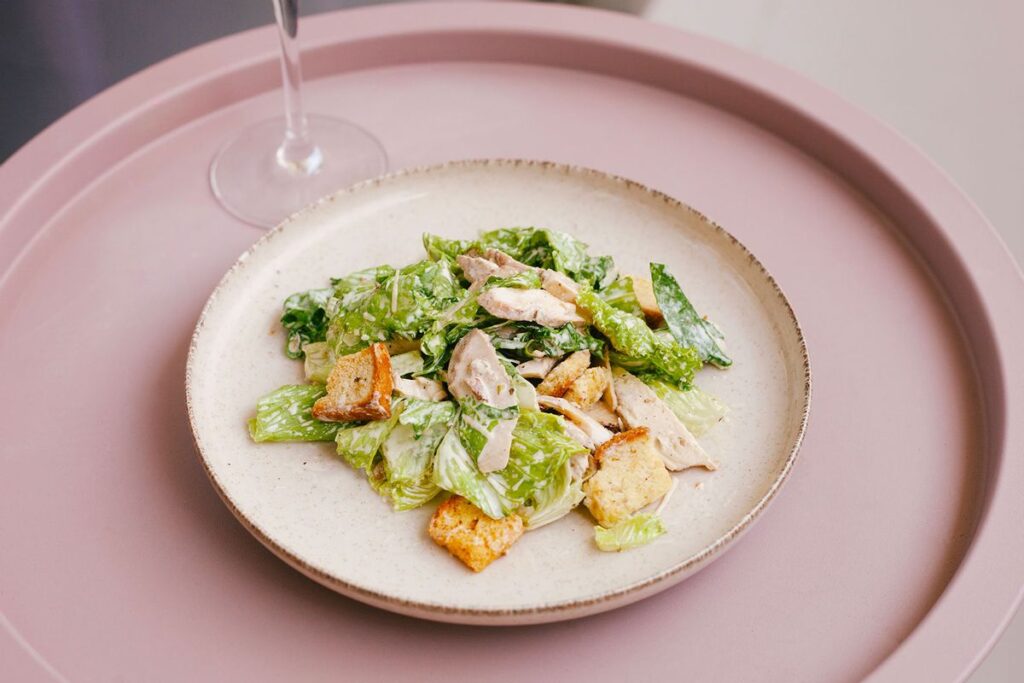The Fourth of July may be best known as the national holiday marking the founding of the United States of America, but it’s also a big day for the Caesar salad, hailed as the “king of salads.” This year, the iconic combination of romaine lettuce, croutons, and Parmesan cheese celebrates its 100th anniversary.
The salad is said to have been invented by Cesare Cardini, an Italian immigrant who owned several restaurants in Mexico and the United States. On July 4, 1924, the first ever Caesar salad was served to local patrons at Cardini’s restaurant, Caesar’s Place, in Tijuana, Mexico. The first Caesar salad was made entirely from leftovers, as the kitchen was short on ingredients during the Fourth of July rush. Cardini combined romaine lettuce leaves, garlic-flavored oil, Worcestershire sauce, lemon, eggs, and Parmesan cheese to create the delicious dish. It was an instant hit, especially among Californians who traveled across the border to dine (and drink) at Cardini’s restaurants during Prohibition.
History credits Cardini with the origins of the Caesar salad, but there are other versions. One version says that Cardini’s brother, Alex Cardini, created the salad and served it as breakfast to airmen at a San Diego base after a night of booze. Alex, who was a pilot during World War I, named his creation “Aviator Salad.” His version added anchovies, and it became so popular that it was later renamed Caesar salad. Another version says that the salad was actually invented by the mother of one of Cardini’s chefs, Livio Santini.
Cardini often prepared his Caesar salad tableside in the 1960s and 1970s. The salad was conceived as a finger food, with guests picking up individual romaine leaves and biting into them. But many customers were reluctant to get their hands dirty, so Cardini eventually replaced the lettuce with torn cores. Julia Child and Jacques Pépin said on their collaborative cooking show Home Cooking with Julia and Jacques that it was a shame the salad was now eaten with a fork and knife: “It’s a shame. It’s lost a lot of its character and drama. At home, you can certainly serve it the way it was meant to be, but make sure your guests have lots of big paper napkins and plan to make it fancy.”
Cardini was adamant about staying true to the original recipe. In a 1987 interview with the Honolulu Star-Bulletin, his daughter Rosa Cardini explained that her father used only the inner leaves of romaine lettuce, keeping them crisp, dry and cool. He also included soft-boiled eggs for a creamy dressing. Cardini also swore by using “the best and freshest ingredients,” including lemon, olive oil and freshly grated Parmesan.
Want more great food articles and recipes? Subscribe to Salon Food’s newsletter, The Bite.
Nearly three decades after it was first introduced, Caesar salad has become a widely acclaimed dish: by 1953, the salad was recognized by the International Society of Gastronomy in Paris as “the greatest recipe to have originated in the Americas during the past 50 years.”
About 35 percent of U.S. restaurants now have Caesar salad on their menus, and about 43 million bottles of Caesar salad dressing, worth $150 million, were sold nationwide in the past year, according to the Associated Press.
The Caesar salad was recently celebrated in Tijuana with a four-day food and wine festival that featured live music, appearances from chefs around the world including José Andrés, and a grand unveiling of a statue of Cardini.
read more
About Caesar Salad:


